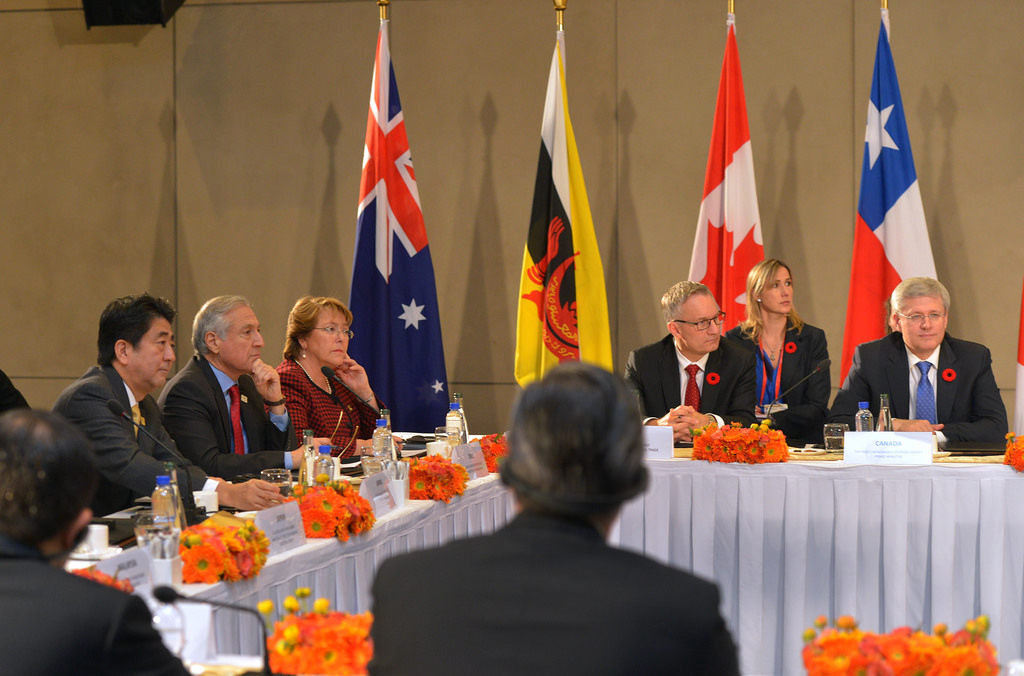Recent debates have emerged regarding Canada’s reliance on trading with the United States. While this has been quite profitable, some argue that it is imperative for Canada to diversify its markets to other countries; namely China, the world’s second largest economy.
Canada must be strategic in diversifying its markets when trading with China to maintain is competitive edge against China’s other trading partners. The recent enactment of a Free Trade Agreement (FTA) signed on November 17, 2014 between the Chinese and Australian governments will lift tariffs on up to 90% of Australian exports sent to China. It will affect Canadian trade relations which China, as Canada’s economy is similar to Australia’s, putting more pressure on Canada to demonstrate its value to China.
To best under stand this relationship, one must cross-examine the 2013 Canadian and Australian exports to China and the United States. Canada exports CAN$20.2b (US$17.4b) to China, or 4.56% of total exports and Australia exports AUS$101.54b (US$82.9b) to China or 36.1% of total exports. On the other hand, Canada exports 357.5b (US$307.7b) to the United States or 75.8% of total exports, while Australia exports only US$9.3b to the United States or 3.7% of total exports. This demonstrates that Canada has placed all of its eggs in one basket, the United States. Australian exports, on the other hand, are more spread out and less dependent on the worlds two largest economies.
stand this relationship, one must cross-examine the 2013 Canadian and Australian exports to China and the United States. Canada exports CAN$20.2b (US$17.4b) to China, or 4.56% of total exports and Australia exports AUS$101.54b (US$82.9b) to China or 36.1% of total exports. On the other hand, Canada exports 357.5b (US$307.7b) to the United States or 75.8% of total exports, while Australia exports only US$9.3b to the United States or 3.7% of total exports. This demonstrates that Canada has placed all of its eggs in one basket, the United States. Australian exports, on the other hand, are more spread out and less dependent on the worlds two largest economies.
It is also significant to examine what exactly is being traded. Both Canada and Australia rely on exporting natural resources to China. Australia’s top exports include coal, iron, gold, crude petroleum and education-related services. Canada’s exports to China include ore, wood articles, fuels and oil.
Australia is one step ahead of the game however, because it already has a Free Trade Agreement with both the United States and China, while Canada only has one with the United States. Australia’s agreement with China took nine years to negotiate, whereas Canada has not begun any sort of legal discussions on this topic. As a result, Australia can be deemed a stronger candidate for China’s resource needs.
If Canada pivots its economy more towards China, it will need to consider how it demonstrates its value. A previous article, “Playing Catch-Up: Canada’s Engagement with China.” reveals this can be done by diversifying our trade sectors in the area of health, finance, and green technologies. While Canada doesn’t need to submit itself to only China or the US, it can start working towards creating vital links with China. The first step toward would be towards a discussion of a Free Trade Agreement with China. Expanding our cultural and educational relationships with China can further facilitate these discussions.



